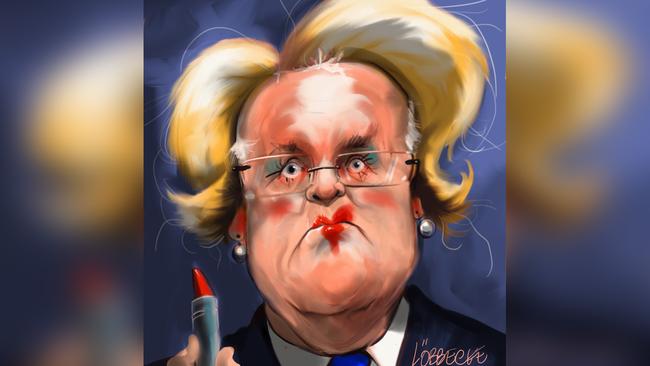From the branches to the benches, Libs need more women

Within and outside the Liberal Party, many have put their faith in Scott Morrison as a true champion of change — and let’s hope that one of those changes is to deliver greater Liberal gender representation in parliament.
Parties and nations are stronger politically, economically and culturally when they harness diversity. We know the Liberal Party needs more balanced gender representation and in doing so it will perform better, make better decisions and have greater appeal to the electorate.
The “woman problem” is widely discussed, debated and dissected. Women are missing at board tables and in corporate executive roles, and women fall well behind their male counterparts in take-home pay and superannuation balances.
In the Liberal Party the numbers are equally confronting. The recent Menzies Research Centre report Gender and Politics makes it clear that Liberal Party women are under-represented in every parliamentary chamber in almost every jurisdiction across the nation. Neither are women engaged at the local party level.
The ballot box tells more of the story. In 2001 for the first time in more three decades less than 50 per cent of women voted Liberal. Since that time a downward trend has emerged, breaking the tight nexus between women and the Liberal Party since its founding by Robert Menzies.
The Liberal Party’s “woman problem” is not a problem with women. Women do not need fixing. Women do not need to be reprogrammed and reformed to conform to a stereotypical notion of candidate.
There are plenty of smart women who have the capability to be elected and to effectively serve their communities and the party.
Women cannot fix the “woman problem” on their own, and this is not a battle between women and men. The party needs all members, men and women, to work together on this from the branches to the parliamentary benches.
The Liberal Party has a long list of firsts: Dame Enid Lyons as the first woman to be elected to the House of Representatives; Julie Bishop as the first female foreign affairs minister; senator Marise Payne as the first female defence minister; and NSW Premier Gladys Berejiklian as the first female transport minister. Their achievements are commendable, but they are exceptions.
Change is under way. There is a commitment to a target of 50 per cent female representation at elections by 2025. There is a commitment to reporting of female representation in branches, at the executive and parliamentary levels, and a Liberal federal fighting fund to identify, encourage and support women to run for parliament.
Taking a leaf out of the sports playbook, the Liberals need a performance plan. First, identify the talent — where the definition of electable talent includes women who may not be in the workforce or the party, who have chosen a different career and life path than men. We should look to universities to foster and recruit female talent and not just wait for elections. The party needs to identify talent to create a pipeline to compete not only for the next games but the games after that and the games after that.
Athletes succeed because they have a good support team around them; one-off training sessions don’t work. The Liberals need to leverage the notion of “paying forward”, where every party member is a member of the support team and proactively pays forward to nominating a woman for a position, committee, speaking spot, seat at a table.
While athletes go through their training sessions, they must also be match fit. Female potential candidates need to build their resilience and ability to perform in the political arena. They must step up to experience the nomination and selection process for a branch executive position or a preselection for office. Every race serves a purpose; even those not won must be analysed and built on to enhance performance for the next.
A young footballer knows every statistic on their favourite player, they know the history of their club and they can easily watch their heroes. They aspire to achieve because they have been inspired by others. Liberal women wanting to be part of the future must know, learn and understand the party history. The party and its members must proactively communicate the achievements and impact of its women, giving them greater visibility.
An athlete and their coach can’t improve performance without knowing what is working and what is not. The party needs to establish an open and real-time dashboard that measures and monitors the advancement of women in roles across the party. If the party is serious about change then it publicly should report change and use data to drive change.
At the heart of this gender performance plan are the liberal values of individual freedom, enterprise and empowerment. It is a plan that recognises every member of the party has an interest in, has a responsibility for and will benefit from gender diversity.
Katherine O’Regan is a Liberal Party branch president and former vice-president of the NSW Liberal Women’s Council.


